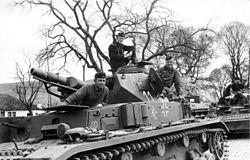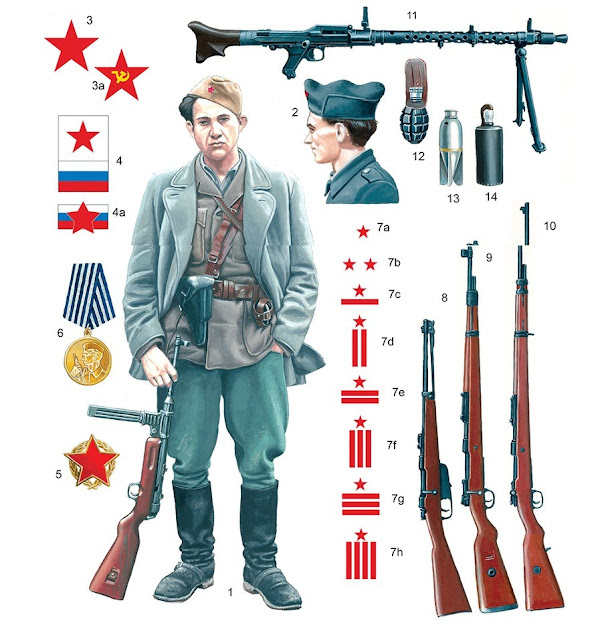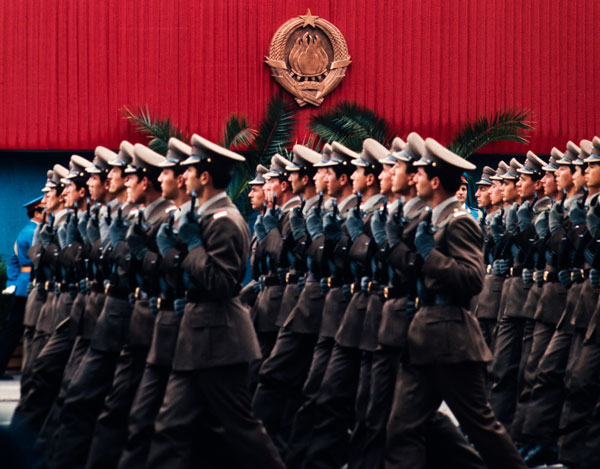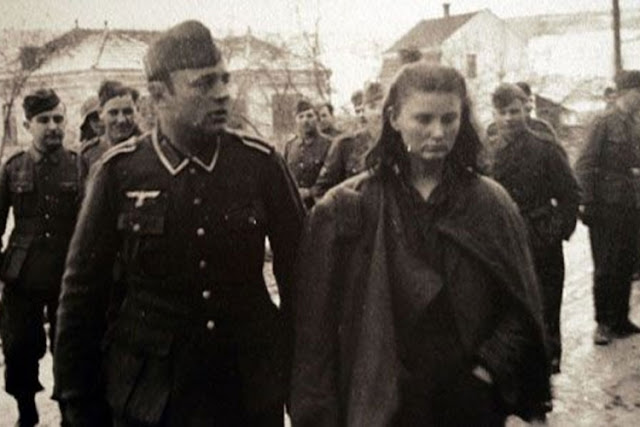Interesting Facts and figures about the Balkans in 1941 Part II
 |
| The German Panzer IV tank in the composition of the 11th armored Panzer Division of the 12th Army, in Yugoslavia broke through from the direction of Bulgaria |
April 3. - The Hungarian Prime Minister Count Pal
Teleki committed suicide, not wanting to take part in the invasion of
Yugoslavia.
April 3. - The Talks of Yugoslav, Greek and British
military representatives in Florina.
April 4. - Vlatko Macek reached Belgrade and took deputy
of the prime minister. Belgrade, Zagreb and Ljubljana in the event of a state
of war be declared open cities.
April 5 (in fact 6. 4. early in the morning) -
signed the Pact of friendship and non-aggression of the USSR and Yugoslavia.
April 6. - The attack of Germany against Yugoslavia
begins April war - the bombing of Belgrade and air bases, attack of the German
12th Army on Macedonia.
 |
| The Germans in Zagreb |
April 6 - Germany attack on Greece (Operation
Marita, part of the Battle of Greece).
April 7 - Skopje Occupied - cut the main connection
between Yugoslavia and Greece; also the second attack of the German Army on
Slovenia and Croatia.
April 8 - Vlatko Macek left the Royal government;
attack the German forces from Bulgaria on Serbia.
April 9 - Germans controlled Macedonia, occupied the
Thessaloniki in Greece.
April 10 - German breakthrough in northern Croatia
and Slovenia leads to the collapse of the front.
April 10 - Before entering the Germans in Zagreb
declared the Independent State of Croatia (Slavko Kvaternik); Vlatko Macek
called membership HSS loyalty on the new state.
 |
| The Germans in Belgrad |
April 10 - As Yugoslavia "does not exist",
the Hungarian government made entry into the "southern regions"
(Prekomurje, Baranja, Backa), Banat in the dispute with Romania.
April 10 - Politbureau of the Central Committee of
Communist Party of Yugoslavia in Zagreb decided to move to Belgrade and
establish a Military Committee to resist the aggressor.
April 11 - The Italian forces enter Yugoslavia.
April 11/12. - Crews sank monitors "Sava",
"Vardar" and "Morava" near Belgrade, Sava bridge blown down
on one of the boats, with great sacrifices.
April 12 - Germany occupies Belgrade.
April 14. - The Yugoslav Supreme Command requested a
truce, the Germans would accept only unconditional surrender.
 |
| The bombing of Belgrade |
April 15. - The King Peter II of Yugoslavia and the
Government left the country; occupied Sarajevo, captured the Supreme Command of
the Royal Army.
April 15th - Ante Pavelic arrived in Zagreb (two
days earlier in Karlovac met with Edmund Vezenmajerom). Germany and Italy
recognized the NDH.
April 17 - Completed unconditional capitulation of
the Kingdom of Yugoslavia (effective the next day at noon).
April 17 - Lieutenants Milan Spasic and Sergej
Masera sank the destroyer Zagreb in the Bay of Kotor, sacrificing their lives.
 |
| The division of Yugoslavia |
April 18 - Greek Prime Minister Alexandros Korizis
committed suicide (notified that he had died of heart).
April 21 - General Georgios Colakoglu signed in
Larissa surrender of Greece army.
April 22. - German aircraft. gen. Helmut Forster
filed to take occupation administration in Serbia (he remained until June).
April 22 - 24 - At a meeting in Vienna certain
Italian-German demarcation line in Yugoslavia. Bosnia assigned to the ISC.
April 23. - Greece signed a truce with Germany.
April 27 - In occupied Slovenia formed the
Liberation Front.
April 27 - Adolf Hitler visited Maribor, ordered the
displacement of Slovenians from Styria and Carinthia.
April 27 - Germans in Athens.
April 30 - Ante Pavelic issued a legal provision of
the race, the basis for the persecution of Serbs, Jews and Gypsies.
April 30 - In occupied Serbia set commissioner
government.
April 30 Germans complete occupation of mainland
Greece, trapped and 1500 Yugoslavs.






Comments
Post a Comment